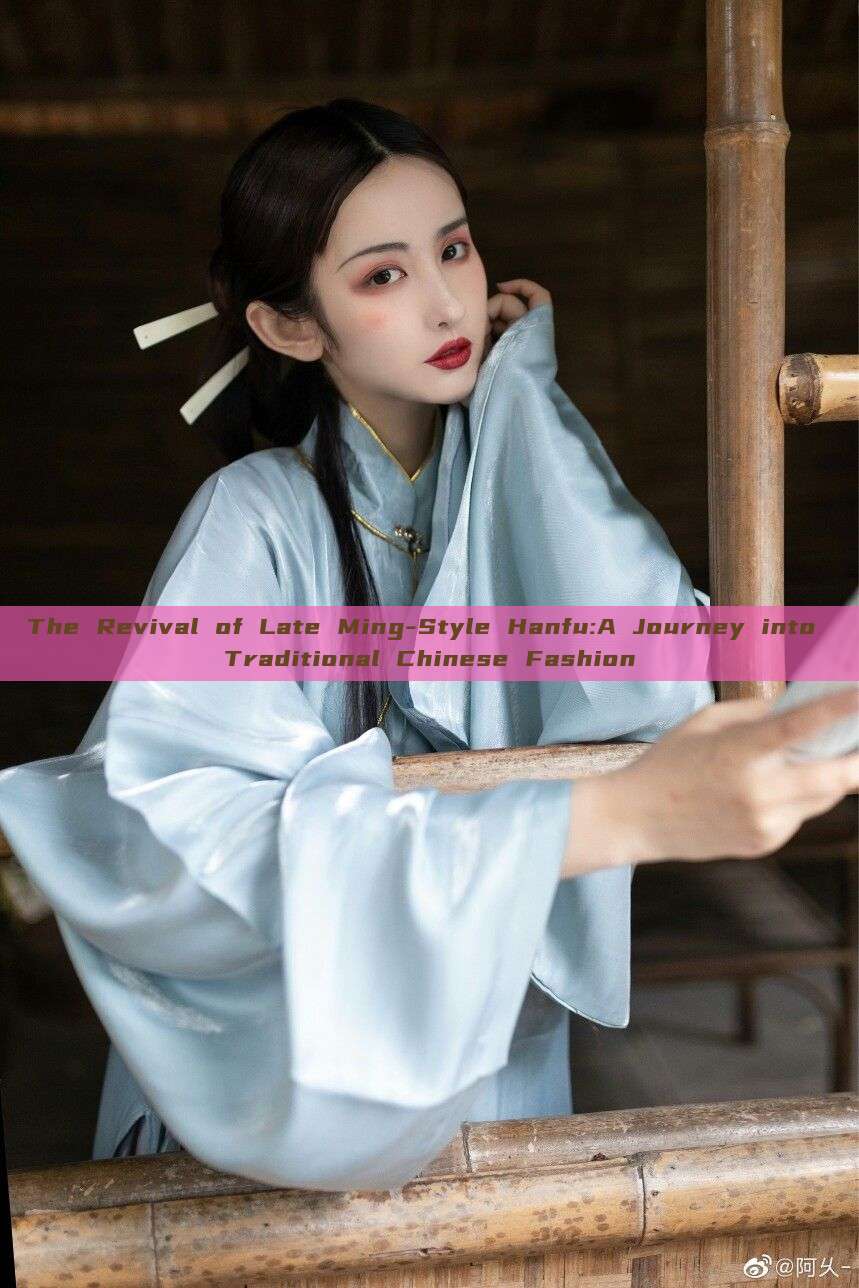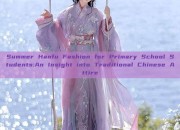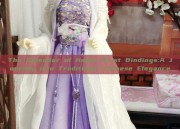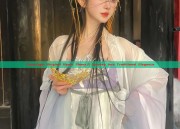The Revival of Late Ming-Style Hanfu:A Journey into Traditional Chinese Fashion
In the contemporary fashion world, there is a growing interest in traditional clothing styles from around the globe. Among these, the late Ming dynasty style of Hanfu has re-emerged as a symbol of cultural heritage and fashion innovation. This article delves into the essence of late Ming Hanfu, exploring its historical context, design elements, and the modern revival.

The late Ming dynasty (roughly 16th to 17th centuries) was a flourishing period in Chinese history, where culture and artistry thrived. Hanfu, the traditional clothing of the Han Chinese, underwent significant evolution during this era. The design elements and patterns were influenced by cultural exchanges with other regions, resulting in a unique blend of traditional and modern elements. These late Ming Hanfu were characterized by their intricate details, vibrant colors, and intricate patterns, making them highly prized even today.
The design of late Ming Hanfu was centered around several key elements. The use of natural dyes such as indigo and茜草 (madder) gave the clothing a rich palette of colors. These hues were often combined with intricate patterns and designs, including floral motifs and geometric shapes. The clothing was also known for its intricate embroidery work, often featuring dragon and phoenix motifs, which symbolized power and good fortune. The use of silk and other luxurious materials added to the elegance and sophistication of these outfits.
Another notable feature of late Ming Hanfu was the use of accessories. These accessories, often made of precious stones, pearls, or wood, added a sense of luxury and elegance to the outfit. They also served as symbols of status and rank within society. The design of these accessories was equally intricate, often featuring carved patterns or intricate inlay work.
The modern revival of late Ming Hanfu is a testament to the enduring appeal of traditional Chinese fashion. Many designers are incorporating elements of late Ming Hanfu into their modern designs, resulting in a fusion of traditional and contemporary fashion. These modern designs are not only worn as traditional costumes but also as everyday wear, demonstrating the versatility of Hanfu as a fashion trend.
The revival of late Ming Hanfu is also seen as a way to revive cultural heritage. Many people are wearing Hanfu as a way to express their cultural identity and pride in their heritage. Events such as cultural festivals and weddings are often marked by the wearing of Hanfu, which serves as a symbol of cultural unity and pride.
However, the revival of late Ming Hanfu is not without its challenges. The preservation of traditional craftsmanship is crucial to maintaining the authenticity of Hanfu. As modern technology advances, there is a need to preserve traditional techniques such as dyeing, embroidery, and carving. Additionally, there is a need to educate people about the history and significance of Hanfu to ensure its continued relevance in modern society.
In conclusion, the revival of late Ming Hanfu represents a fascinating journey into traditional Chinese fashion. It is not only a trend but also a way to revive cultural heritage and express cultural identity. As we move forward, it will be interesting to see how Hanfu continues to evolve and adapt to modern fashion trends while preserving its traditional essence.
Note: The above article is an imaginative piece based on the general knowledge about Hanfu and late Ming fashion. Please refer to reliable historical sources for accurate information about late Ming Hanfu designs and culture.
Related Recommendations
-

Summer Hanfu Fashion for Primary School Students:An Insight into Traditional Chinese Attire
-

The Splendor of Hanfu Wrist Bindings:A Journey into Traditional Chinese Elegance
-

Innovating the Cheongsam:The Evolution of Qipao Dress into Modern Fashionable Skirts
-

CloudLight Original Hanfu Shoes:A Journey into Traditional Elegance


